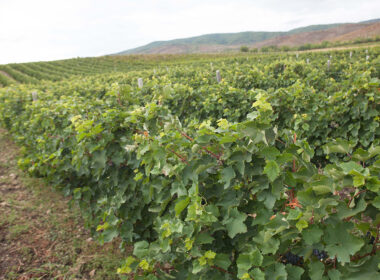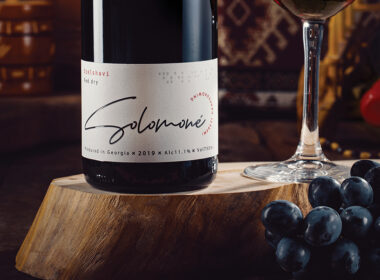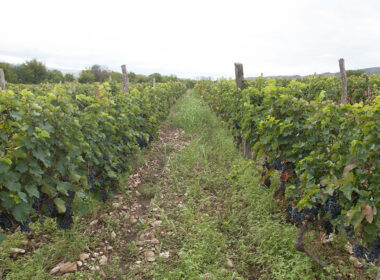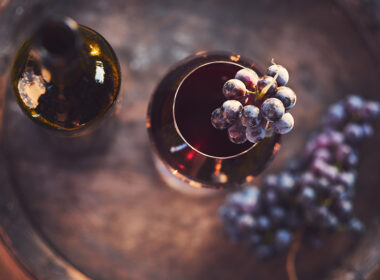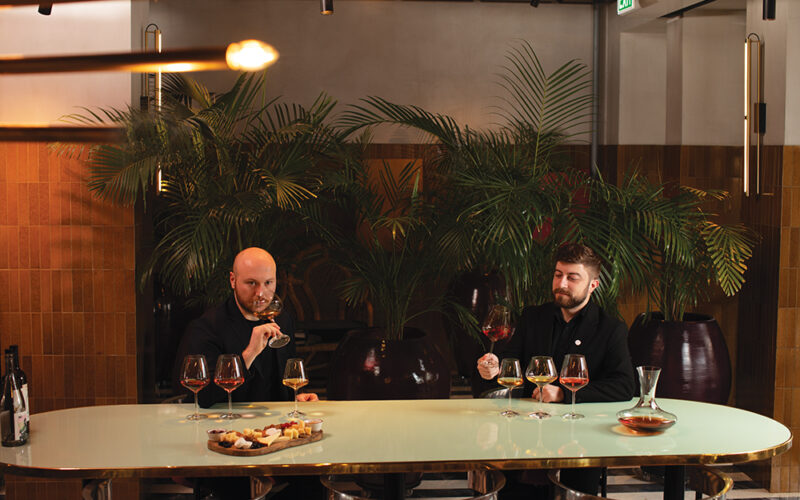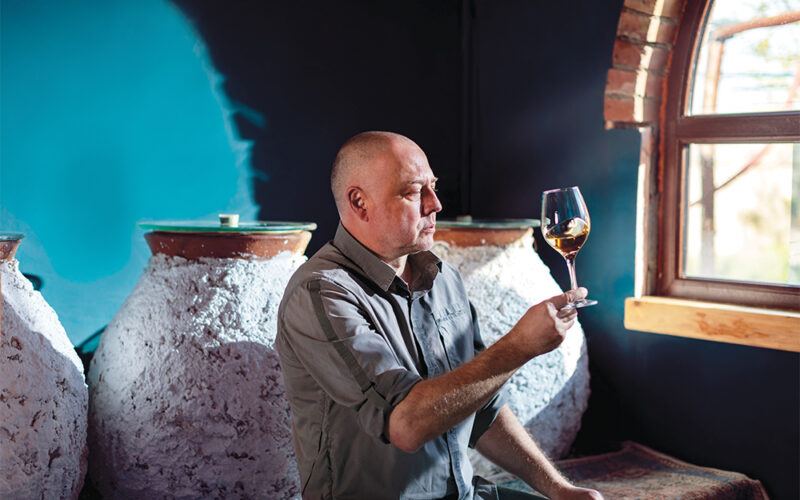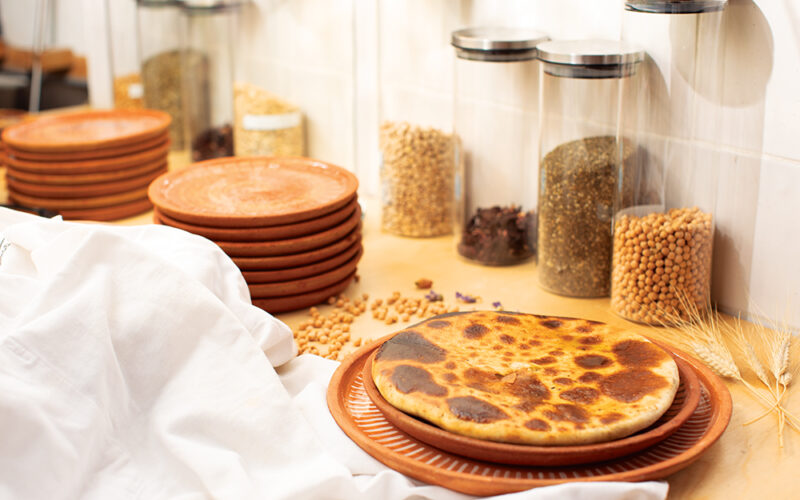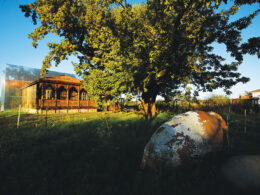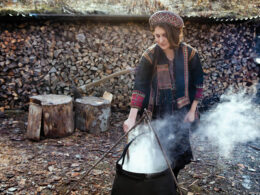| Represents the Third Dimension that Georgia Brings to the Global Market |
Tazo Tamazashvili
The best sommelier of Georgia, 2018
Rezi Tsetskhladze
International Wine Expert
Lasha Tsatava
DipWSET. Co-founder of Saperica. Beverage Director at Chama Mama
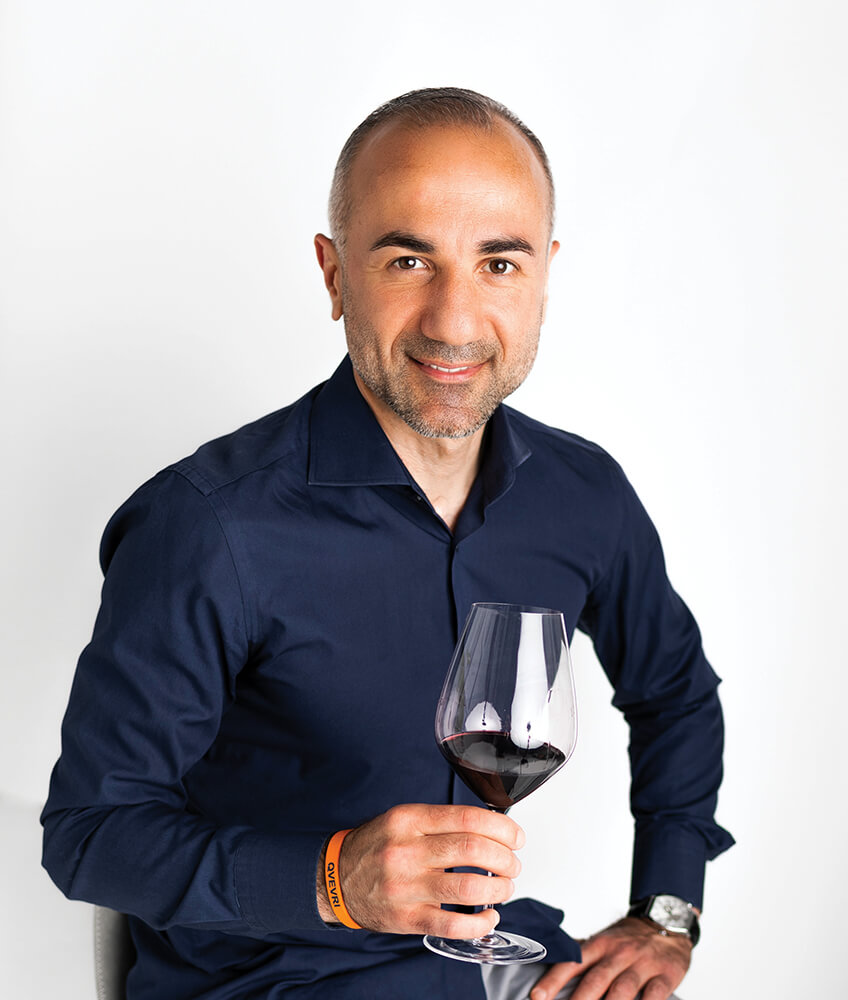
Tazo Tamazashvili: In this edition of Homeland of Wine, Lasha Tsatava, Rezi Tsetshtladze, and I, will delve into topics such as qvevri, churi (qvevri in western Georgia), biodynamics, and naturalism. Our aim is to convey the essentials to Georgian wine aficionados, consumers, enthusiasts, professionals, and sommeliers worldwide, ensuring they fully grasp the traditional style that our ancestors used for centuries to craft wine—the style that we Georgians have preserved, unchanged.
The methods of qvevri and churi, along with biodynamics and naturalism, represent centuries-old traditionsof the Georgian people.
We should begin our discussion with Lasha Tsatava’s proposed Amber Wine Classification. Through Homeland of Wine, we have the opportunity to share this classification with our readers, wine enthusiasts, and industry professionals. I am confident that this topic will undoubtedly spark discussions among representatives in the wine industry and lead to substantial changes in the near future.
Lasha Tsatava: Amber wine is the quintessential expression of our identity and holds a vital place in Georgian culture. When differentiating Georgia from other winemaking nations, we consistently start by discussing the stylistic diversity of Georgian wine. You can sample wines from around the world that are fermented in stainless steel vessels and aged in oak barrels (similar wines are also produced in Georgia, in significant quantities), but amber wine represents the third dimension – 3D, that Georgia brings to the global market. Another advantage worth considering is that Georgians can craft amber, red, and classic-style white wines, using qvevri and churi. Our ancestors affectionately referred to such wines as Udedo (translating to motherless). We should ensure that this stylistic diversity is complemented by effective delivery and approach on our part.
While it’s true that we have an 8000-year continuous tradition of winemaking, we are still a relatively new country in the global wine market and lack extensive experience in wine marketing. To effectively present and introduce amber wine to the global market, we can categorise it into three types:
Introductory Amber:
Amber wine, crafted in the Imeretian (Western Georgia) style, featuring partial contact with chacha (pomace), ranging from 5% to 30% or overall shorter 100% skin contact resulting in medium-bodied, medium tannin amber wine exhibiting more fresh fruit notes and some dried fruits, appealing especially to consumers that are new to tasting skin contact wines or familiar with and fond of orange wines.
Full-on Amber:
Amber wines produced using the Kakhetian (Eastern Georgia) method are known for their full-bodied nature and high tannins, featuring more dried fruit notes than fresh. This style of wine is geared towards wine enthusiasts, or individuals already acquainted with skin-contact wines, seeking to delve deeper into exploring new amber styles and grape varieties.
Amber Combo:
The third style, which I find particularly intriguing, which has evolved over the past 20-30 years, involves further ageing of the same full-on amber in oak vessels to soften the tannins. This wine tends to be fuller in body, with more dried fruit notes than fresh, and well-rounded tannins and oak flavours. This sub-category appeals to the consumers who enjoy oak notes in their wine, making it a compelling choice for them.
Dividing amber wines into these three main categories and presenting them correctly will significantly facilitate foreign consumers’ perception of amber wines. Simultaneously, it will provide a clear distinction between orange wine and amber wine, which are often confused today.
Rezi Tsetskhladze: Concerning the association of amber wine with orange wine: orange wine has become so prevalent worldwide that it will require considerable time and effort to disassociate the two. However, why should amber wine be named after another “colour” or fruit, leading to confusion? It’s also a fact that many foreigners visiting Georgia are more familiar with orange wine and tend to request it more frequently than amber wine.
Lasha Tsatava: I can recall my visit to Barcelona, where locals often emphasised, “This is not Spain, this is Catalonia.” Similarly, when welcoming guests to Georgia, we can also point out that they are entering the homeland of amber wine, not that of orange wine. This serves as a point of comparison. If our ancestors were able to preserve this wine style for 8000 years, we also bear the responsibility to introduce this classification to the global market in a way that sets it apart from the existing style of orange wine. Regarding amber wine, it’s crucial to acknowledge that orange wine lacks the rich stylistic definition that our ancestors left us with.
Rezi Tsetskhladze: Concerning Lasha’s classification of amber wine, it would be beneficial to proceed with this topic methodically. We should analyse the processes and potential outcomes resulting from categorising amber wine in such a manner. Afterward, we can engage in discussions with the public and arrive at a decision collaboratively.
In my opinion, amber wine can be further divided into subcategories, including qvevri-produced amber wine, amber wine made in stainless steel vessels, and those crafted using other types of vessels, all these can be classified under one umbrella
as part of the same category.
Here arises the question of colour determination: should a wine aged in contact with chacha for one month be classified as amber, or does this designation apply only after two months? This raises the issue of defining colour palettes. Additionally, varietal diversity comes into play, as different grape varieties exhibit varying colour tones.
Lasha Tsatava: We should not perceive amber solely as a colour, as it represents the style of wine. Focusing solely on colour overlooks the important distinguishing factor: winemaking method and vessel!
Tazo Tamazashvili: Centuries ago, when our ancestors first began crafting wine, they didn’t use terms like amber or rose. They just called it either white or red wine. Even today, if you visit a family in Kakheti, they’ll likely say “I made white wine,” without mentioning amber. For them, it’s simply white wine. That’s why I believe it’s clearer to break it down as follows:
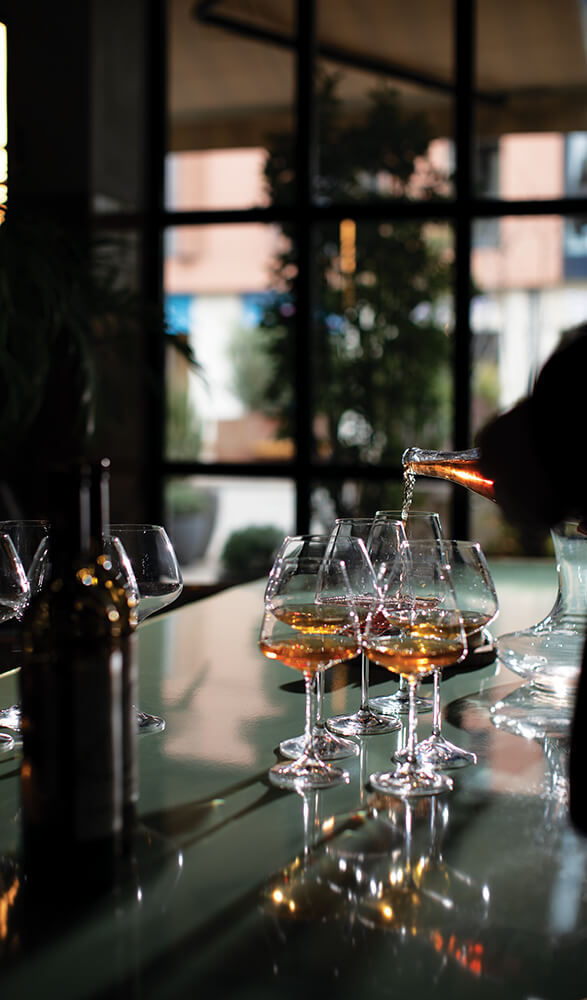
Qvevri White Wine -The Colour Intensity of Qvevri White Wine: Light Amber, Medium Amber, Deep Amber.
In this context, Kakhetian qvevri white wine inherently implies full skin-contact (3 to 6 months on chacha), while churi white wine suggests a maximum of 30% skin-contact.
Lasha Tsatava: To respond to Rezi’s opinion – associating amber wine only with a qvevri, churi or other clay vessel, won’t be acceptable for large-scale producers. Therefore, we can also consider the second version: for amber wine to include 1) traditional amber wine and 2) modern (or International) amber wine.
Hence, I’ll revert to our initial approach: within both categories—traditional amber wine and modern (or International) amber wine—we can classify them as Introductory, Full on Amber, and Amber Combo. Both large and small producers alike can use these three styles effectively. Furthermore, communication with the customer will be significantly simplified. For instance, if a customer picks up a bottle labelled Amber Traditional, they’ll immediately recognize it as an amber wine crafted in qvevri or churi. Conversely, if it’s labelled Amber International, they’ll know it’s an orange wine-style wine made in stainless steel vessels—both crafted in Georgia, the homeland of wine, using distinctive grape varieties.
Rezi Tsetskhladze: This wording is very versatile, as it caters to both large corporations and small-scale wineries, with particular relevance to global markets.
Tazo Tamazashvili: With this, we’ll create an international classification that not only simplifies operations for wineries, sommeliers, exporters, but also for consumers.
Lasha Tsatava: One of the biggest challenges in presenting Georgian wine to the international market is the lack of well-defined and strategically crafted messages for promoting amber wine category. Therefore, engaging in a collaborative discussion involving the National Wine Agency, producers, winegrowers, sommeliers, and industry experts will facilitate the development of a more unified perspective. The more effectively we articulate and refine not only this style, but the marketing messages associated with it, the more consumers will recognize and embrace amber wine.
Amber wine stands as our strength, representing the foremost emblem of our diversity and identity. If we don’t proactively lead ourselves in this direction, no one else will solve it for us. This style of wine is versatile enough to grace the shelves of establishments beyond Georgia’s borders- whether in an importer’s portfolio, a wine shop’s selection, or a restaurant’s wine list.
This is a niche waiting for us, and no one else can occupy it because we hold the advantage in this style both historically and stylistically. We present the world market with a third dimension that they lack. With the right messaging, this style will unlock more opportunities, paving the way for other Georgian varieties and wine styles to follow the suit.
Tazo Tamazashvili: I’m confident that initiating this discussion within the pages of the magazine will yield tangible results. It will spark a wide-ranging discussion that is bound to produce logical outcomes.
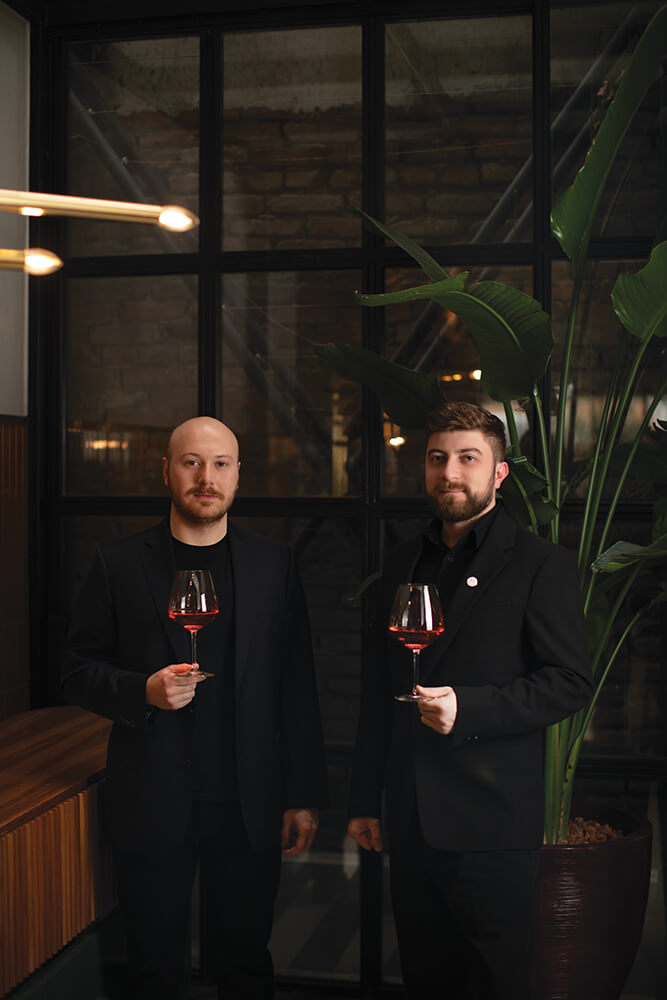
Naturalism and Biodynamics
Tazo Tamazashvili: Georgia ranks fourth globally in the number of natural wine producers, following France, Italy, and Spain. With 114 registered wineries, we hold the fourth position, but there are numerous other natural wine producers in the country, many of whom remain unregistered. Across all regions of Georgia, numerous wineries produce two to three tons of wine using natural methods for family consumption.
In our discussion, we are merging two subjects: biodynamics and naturalism. Both entail nurturing nature and fertilising vineyards and soil through natural methods. This includes practices such as burying compost-filled cattle horns in vineyards as well as treating vineyards with herbal infusions. Additionally, adhering to lunar and planetary calendars plays a crucial role in determining vineyard care.
Unfortunately, historical records regarding the care of vineyards in our country over the centuries are absent. However, it’s inconceivable that Georgians would write the 8000-year old history of wine, with vineyards untended. It’s important to consider that throughout history, Georgia has faced frequent enemy invasions and attacks, often resulting in the destruction of vineyards.
I find it crucial and essential to establish a connection between biodynamics and naturalism in our country. I had the opportunity to attend a biodynamics course at the Gérard Bertrand school in Languedoc-Roussillon (a prominent wine region located in the south of France between the Mediterranean Sea and the Pyrenees. This region shares borders with Spain and merges two provinces, the Occitan-speaking Languedoc and the Catalan-speaking Roussillon).
I am both a follower and a supporter of this domain. I advocate the idea that biodynamics and Georgian natural qvevri wine are closely intertwined, as both embody the principles of tending to nature.
Lasha Tsatava: Without the care and attention to the soil, the synthesis between the vineyard and soil cannot exist, and without this synthesis, producing quality wine becomes impossible. I will offer my perspective on natural wine – the term itself appears contradictory, since what is handled by humans is no longer inherently natural, is it?! Another issue within this category is individuals trying to align their own wines with the category, however they please.
At Chama Mama I do not have a separate category dedicated to natural wines, but I plan to start by establishing a precise definition – what we refer to as natural wine and which wines should be included in this category. This is quite a challenging and controversial topic.
For me, the responsibility toward natural wine doesn’t end solely with its bottling. It’s essential for this responsibility to persist and be fulfilled through the consumer’s enjoyment of the wine. In the category of natural wine, relying solely on a philosophical approach isn’t sufficient; it’s crucial to deliver this wine to the consumer in a stable state.
Tazo Tamazashvili: I agree with you. It always depends on the winemaker’s intentions regarding the ageing process of natural wine and its intended destination. It must endure long-distance transportation and maintain stability in taste, aroma, and appearance. Clear faults and diseases should not be excused just because wine is natural.
Rezi Tsetskhladze: Responsibility, just like with the producer, also lies with the importer. The producer needs to decide whether their wine is ready to be exported beyond the borders of the country or whether it’s preferable to sell it on the local market.
If it’s not ready, it’s not advisable to proceed with its export. On the other hand, the importer should be well-informed and accurately evaluate this matter, determining whether or not the wine is fit for transportation, and ensuring compliance with relevant regulations (today, both natural and non-natural wines are transported to Asian countries such as Korea, Japan, and Singapore, using refrigerated tanks).
Lasha Tsatava: There are numerous factors to consider to ensure that the wine reaches the consumer in optimal condition, reflecting the flavours envisioned and crafted by the winemaker. Responsibility should be shared by both parties- the producer and the importer.
Rezi Tsetskhladze: There is no denying that biodynamics and natural winemaking have deep historical ties to Georgia. However, due to wars, annexations, widespread vine uprooting, and other factors over the centuries, this direction has not been as developed in our country as one might expect, given Georgia’s 8000-year uninterrupted tradition of winemaking.
In Burgundy, I worked in a wine cellar that produced 300,000 bottles of wine, adhering to biodynamic principles, but it wasn’t entirely biodynamic winemaking. Simply put, the winemaker had a well-thought-out approach to winemaking, deciding where intervention was necessary and where it wasn’t. He used a horse for plowing and timed his pruning by observing the moon. This man deserves praise for achieving excellence in both vineyard cultivation and winemaking. Drawing from biodynamics, he gained valuable insights. It’s a compelling approach – to understand the vineyard’s needs, analyse them, and make informed decisions, creating a hybrid of traditional and modern approaches.
ქარვისფერი ღვინო –
ეს არის მესამე განზომილება, რომელსაც საქართველო სთავაზობს მსოფლიო ბაზარს
თაზო თამაზაშვილი: თემები, რომლებსაც ლაშა ცატავასთან და რეზი ცეცხლაძესთან ერთად Homeland of Wine-ს ამ ნომერში შევეხებით – ქვევრი, ჭური, ბიოდინამიკა და ნატურალიზმია. ვისაუბრებთ მთავარ გზავნილებზე ქართული ღვინის მოყვარულების, მომხმარებლების, ენთუზიასტების, პროფესიონალებისა და სომელიეებისთვის მთელ მსოფლიოში, რათა მათ მიერ სწორად იყოს აღქმული ის უძველესი სტილი, რომლითაც ჩვენი წინაპრები საუკუნეების განმავლობაში ამზადებდნენ ღვინოს და რომელიც ქართველებმა დღემდე უცვლელად შემოვინახეთ.
ქვევრისა და ჭურის მეთოდი, ბიოდინამიკა და ნატურალიზმი ქართველების მრავალსაუკუნოვანი ტრადიციაა.
საუბარს ვიწყებთ ლაშა ცატავას მიერ შემუშავებული ქვევრის ღვინის კლასიფიკაციით. Homeland of Wine-ს მეშვეობით შესაძლებლობა გვაქვს, აღნიშნული კლასიფიკაცია გავუზიაროთ ჩვენს მკითხველებს, ღვინის მოყვარულებს, პროფესიონალებს. დარწმუნებული ვარ, ეს თემა აუცილებლად გახდება მსჯელობის საგანი ღვინის სექტორის წარმომადგენლებს შორის და ახლო მომავალში მნიშვნელოვანი ცვლილებების მომტანიც.
ლაშა ცატავა: ქარვისფერი ღვინო ყველაზე კარგად გამოხატავს ჩვენს იდენტობას. ის ქართული კულტურის მნიშვნელოვანი ნაწილია. როდესაც გვიწევს ახსნა, რა გამოარჩევს საქართველოს მეღვინეობის სხვა ქვეყნებისგან, საუბარს ყოველთვის ქართული ღვინის სტილისტური მრავალფეროვნებით ვიწყებთ. თქვენ შეგიძლიათ, დააგემოვნოთ მსოფლიო ღვინოები, რომლებიც უჟანგავ ჭურჭელშია დაყენებული და მუხის კასრებში დავარგებული, ასეთი ღვინოები საქართველოშიც დიდი რაოდენობით იქმნება, მაგრამ ქარვისფერი ღვინო ეს არის მესამე განზომილება – 3D, რომელსაც საქართველო სთავაზობს მსოფლიო ბაზარს! უპირატესობად უნდა ჩაითვალოს ისიც, რომ ქართველებს ქვევრში და ჭურში შეგვიძლია დავაყენოთ როგორც ქარვისფერი, ისე წითელი და თეთრი კლასიკური სტილის ღვინოც კი. ასეთ ღვინოს ჩვენი წინაპრები „უდედოს“ უწოდებდნენ. ამ სტილისტურ მრავალფეროვნებას ჩვენი მხრიდან სწორი მიწოდება/პოზიციონირება სჭრიდება. მართალია, მეღვინეობის 8000-წლიანი უწყვეტი ტრადიცია გაგვაჩნია, მაგრამ მსოფლიო ღვინის ბაზარზე მაინც ახალი ქვეყანა ვართ, რომელსაც ღვინის მარკეტინგში დიდი გამოცდილება არ აქვს.
იმისთვის, რომ მსოფლიო ბაზარს ქარვისფერი ღვინო სწორად წარვუდგინოთ და გავაცნოთ, ის სამ კატეგორიად შეგვიძლია ჩავშალოთ:
Introductory Amber:
იმერული (დასავლეთ საქართველო) სტილით დაყენებული ქარვისფერი ღვინო, ჭაჭასთან ნაწილობრივი კონტაქტით (5%-დან 30%-მდე), ან 100% ჭაჭასთან კონტაქტი მოკლე დროით. ამ ქვეკატეგორიაში ღვინო ხასიათთება საშუალო სხეულით, საშუალო ტანინებით და უფრო ცოცხალი ხილის ტონებით, ვიდრე დაჩირებული. ღვინის ეს სტილი განსაკუთრებით ახლოსაა იმ მომხმარებლების გემოვნებასთან, რომლებიც კარგად იცნობენ და უყვართ Orange Wine ან პირველად აგემოვნებენ ქარვისფერ ღვინოებს.
Full-on Amber:
კახური (აღმოსავლეთ საქართველო) მეთოდით დაყენებული ქარვისფერი ღვინოები, რომლებიც სრულსხეულიანია, მაღალტანინიანი, დაჩირებული ხილის ტონები უფრო მეტად ახასიათებთ, ვიდრე ცოცხალი ხილის ტონები. ასეთი სტილის ღვინოები უფრო ღვინის ენთუზიასტებისთვისაა განკუთვნილი, ან მათთვის, ვინც უკვე კარგად იცნობს Skin-contact ღვინოებს და სურს, უფრო წინ წაიწიოს და ახალ ღვინოებს გაეცნოს.
Amber Combo:
მესამე სტილი, რომელიც ბოლო 20-30 წელია ჩამოყალიბდა და ვფიქრობ, ძალიან საინტერესოა, არის იგივე Full-on ქარვისფერი ღვინო, რომელიც დამატებით დავარგებულია მუხის კასრებში. ეს დამატებით არბილებს ტანინებს და ღვინოს მუხის ტონებს სძენს. ამ ღვინის მიმართ ინტერესი აუცილებლად გაუჩნდება იმ მომხმარებელს, რომელსაც მუხის ტონები უყვარს.
ამ სამ ძირითად კატეგორიად დაყოფილი ქარვისფერი ღვინოები და მათი სწორი წარდგენა ბევრად გააადვილებს უცხოელ მომხმარებლებში ჩვენი ღვინოების აღქმას. ამავე დროს, ეს იქნება კარგი საშუალება, რათა მოხდეს Orange Wine-ს და Amber Wine-ს განსხვავება/გამიჯვნა, რაც დღეს უმეტესად აღრეულია.
რეზი ცეცხლაძე: Amber Wine-ს Orange Wine-თან გაიგივებას რაც ეხება: Orange Wine იმდენად არის გავრცელებული მთელ მსოფლიოში, რომ ვფიქრობ, დიდი დრო და ძალისხმევა დაგვჭირდება ამ გაიგივების აღმოსაფხვრელად. არადა, რატომ უნდა ერქვას ქარვისფერ ღვინოს სხვა „ფერის“ სახელი, სხვა ხილის სახელი და რატომ უნდა ხდებოდეს მასთან აღრევა?! ისიც ფაქტია, რომ საქართველოში ჩამოსული უცხოელების დიდმა ნაწილმა Orange Wine უფრო იცის და უმეტესად უფრო მას ითხოვს, ვიდრე Amber Wine-ს.
ლაშა ცატავა: მე დამამახსოვრდა ბარსელონაში სტუმრობისას როგორ ამბობდნენ ადგილობრივები – „ეს ესპანეთი არ არის, ეს კატალუნიაა“. ჩვენც შეგვიძლია, საქართველოში ჩამოსულ სტუმარს მივუთითოთ, რომ ის ჩამოდის არა ფორთოხლისფერი, არამედ ქარვისფერი ღვინის სამშობლოში. ეს ისე, შედარებისთვის.
ჩვენმა წინაპრებმა 8000 წელი თუ შემოგვინახეს ღვინის ეს სტილი, ჩვენც ჩვენი წილი პასუხისმგებლობა გაგვაჩნია, რათა მსოფლიო ბაზარზე ისე წარვადგინოთ ეს კლასიფიკაცია, რომ არ მოხდეს უკვე არსებულ Orange Wine-ს სტილთან მისი გაიგივება. აქვე ისიც უნდა გვახსოვდეს, რომ Orange Wine-ს სტილის ისეთი ღრმა დეფინიცია, როგორც ეს ჩვენ ჩვენმა წინაპრებმა დაგვიტოვეს ქარვისფერი ღვინის შემთხვევაში, არ გააჩნია.
რეზი ცეცხლაძე: რაც შეეხება ლაშას მიერ შემუშავებულ ქარვისფერი ღვინის კლასიფიკაციას, კარგი იქნება, ამ თემას ნაბიჯ-ნაბიჯ მივყვეთ, კარგად გავაანალიზოთ ის პროცესები და მოსალოდნელი შედეგები, რაც შეიძლება ქარვისფერი ღვინის ასეთ კატეგორიებად დაყოფამ გამოიწვიოს, შემდეგ კი ფართო საზოგადოებასთან ერთად ვიმსჯელოთ და მივიღოთ გადაწყვეტილება.
ჩემი აზრით ქარვისფერი ღვინო შეიძლება ჩაიშალოს დამატებით ისეთ ქვეკატეგორიებად, როგორიცაა ქარვისფერი ღვინო დამზადებული ქვევრში, ქარვისფერი ღვინო დამზადებული უჟანგავი ფოლადის ჭურჭელში, ქარვისფერი ღვინო დამზადებული სხვა ჭურჭელში და ასე მოექცეს ეს ყველაფერი ერთი ქოლგის ქვეშ. აქ დგება ფერის საკითხიც: უნდა განისაზღვროს ერთი ან ორი თვის განმავლობაში ჭაჭაზე დაყოვნებულ ღვინოს ვუწოდოთ თუ არა ქარვისფერი. ანუ რის მიხედვით უნდა განისაზღვროს ფერის პალიტრა?! აქ შემოდის კიდევ ერთი თემა – ჯიშურობა. სხვადასხვა ჯიშს სხვადასხვა ფერის ტონალობა ახასიათებს.
ლაშა ცატავა: ამიტომ ქარვისფერი არ უნდა განვიხილოთ როგორც ფერი, რადგან ეს არის ღვინის სტილი. თუ მხოლოდ ფერზე ვისაუბრებთ, გამოვტოვებთ მთავარს – სტილისტიკას!
თაზო თამაზაშვილი: ჩვენი წინაპრები, რომლებმაც საუკუნეების წინ დაიწყეს ღვინის შექმნა, არ ეძახდნენ მას ქარვისფერს, ვარდისფერს და ა.შ. მათთვის იყო თეთრი ღვინო და წითელი ღვინო. დღესაც, კახეთის ნებისმიერ ოჯახში რომ მიხვიდეთ, იტყვიან „თეთრი ღვინო დავაყენე“ და არ უწოდებენ მას ქარვისფერს. მათთვის ეს არის თეთრი ღვინო. აქედან გამომდინარე, ვფიქრობ, ჩაშლა უკეთესია მოხდეს შემდეგნაირად:
ქვევრის თეთრი ღვინო – ქვევრის თეთრი ღვინის ფერთა ინტენსივობა: მსუბუქი ქარვისფერი, საშუალო ქარვისფერი, მუქი ქარვისფერი.
ამ შემთხვევაში, ქვევრის კახური თეთრი ღვინო ავტომატურად უნდა გულისხმობდეს რომ არის Full Skin-contact – სრული კანთან კონტაქტი (3-დან 6 თვემდე ჭაჭაზე დაყოვნებული), ხოლო ჭურის თეთრი ღვინო, მაქსიმუმ 30% Skin-contact – კანთან კონტაქტი.
ლაშა ცატავა: რეზის მოსაზრებას მსურს გამოვეხმაურო: ქარვისფერი ღვინო მხოლოდ ქვევრთან, ჭურთან ან სხვა თიხის ჭურჭელთან რომ იყოს დაკავშირებული, ამას არ და ვერ დაეთანხმებიან მსხვილი მწარმოებლები. ამიტომ, მეორე ვერსიაც შეგვიძლია განვიხილოთ: Amber Wine რომ მოიცავდეს 1) ტრადიციულ ქარვისფერ ღვინოს და 2) თანამედროვე (ან International) ქარვისფერ ღვინოს.
აქედან გამომდინარე ისევ დავუბრუნდები იმას, რითიც დავიწყეთ: ამ ორივე კატეგორიაში – ტრადიციული ქარვისფერი ღვინო და თანამედროვე (ან International) ქარვისფერო ღვინო – შეიძლება იყოს ეს Introductory, Full on Amber და Amber Combo. მსხვილ მწარმოებლებსაც და მცირე მეწარმეებსაც შეეძლებათ ამ სამი სტილის გამოყენება. მომხმარებელთან კომუნიკაციაც ბევრად გაადვილდება: თუ აიღებს ბოთლს და ეტიკეტზე წაიკითხავს Amber Traditional, ეცოდინება, რომ ეს ქვევრში ან ჭურში დაყენებული ქარვისფერი ღვინოა, ხოლო თუ Amber International – მაშინ ეს არის უჟანგავ ჭურჭელში დამზადებული Orange Wine-ს სტილისტიკის ღვინო და ორივე არის საქართველოში, ღვინის სამშობლოში, განსხვავებული ყურძნის ჯიშებისგან დამზადებული ქარვისფერი ღვინო.
რეზი ცეცხლაძე: ეს ფორმულირება ძალიან მოქნილია და კარგად მოერგება როგორც დიდ კომპანიებს, ისე მცირე მარნებს და რაც მთავარია, საერთაშორისო ბაზრებს.
თაზო თამაზაშვილი: ამით საერთაშორისო კლასიფიკაციას შევქმნით, რომელიც მართლაც გაუმარტივებს საქმეს მეღვინეებსაც, სომელიეებსაც, ექსპორტიორებსაც და მომხმარებლებსაც.
ლაშა ცატავა: ქართული ღვინის საერთაშორისო ბაზარზე წარდგენისას ერთ-ერთი დიდი პრობლემა არის ის, რომ ჩვენ არ გვაქვს ქარვისფერი ღვინის გაყიდვებისთვის სწორად ჩამოყალიბებული მესიჯები. ამიტომ საერთო აზრის ჩამოყალიბება, მსჯელობა, რომელშიც ღვინის ეროვნული სააგენტოც ჩაერთვება, მწარმოებლებიც, მევენახეებიც, სომელიეებიც, სფეროს სპეციალისტებიც, შესაძლებელს გახდის საერთო აზრის მეტ-ნაკლებად ჩამოყალიბებას. რაც უფრო ეფექტურად ჩამოვაყალიბებთ და განვავითარებთ არა მხოლოდ ამ სტილს, არამედ მასთან დაკავშირებულ მარკეტინგულ მესიჯებს, მით მეტი მომხმარებელი გაიცნობს და შეიყვარებს ქარვისფერ ღვინოს.
ქარვისფერი ღვინო ჩვენი ძლიერი მხარეა, ჩვენი განსხვავებულობისა და იდენტობის მთავარი ნიშანი, ამიტომ ჩვენ თავად თუ არ ვითავეთ ლიდერობა ამ მიმართულებით, სხვა ამას არ და ვერ მოგვიგვარებს. ეს არის ღვინის სტილი, რომელიც საქართველოს საზღვრებს გარეთ ნებისმიერი თაროზე შეიძლება იყოს – იმპორტიორის პორტფოლიოში, ღვინის მაღაზიის პორტფოლიოში, რესტორნის ღვინის ბარათში. ეს არის თარო, რომელიც დატოვებულია ჩვენთვის და მას სხვა ვერ შეავსებს, რადგან უპირატესობა ამ სტილში იტორიულადაც და სტილისტიკურადაც ჩვენ გვაქვს. სწორედ ჩვენ ვთავაზობთ მსოფლიო ბაზარს მესამე განზომილებას, რაც მას არ გააჩნია. სწორი მესიჯების მეშვეობით უფრო მეტ კარს შეაღებს ეს სტილი, რასაც აუცილებლად მიჰყვება სხვა ქართული ჯიშები და ღვინის სტილები.
თაზო თამაზაშვილი: ვფიქრობ, ამ თემის წამოწევა ჩვენი ჟურნალის გვერდებიდან აუცილებლად მოიტანს შედეგს. დაიწყება ფართო მსჯელობა და ეს ლოგიკურ შედეგებამდეც მიგვიყვანს.
ნატურალიზმი და ბიოდინამიკა
თაზო თამაზაშვილი: საქართველო ბუნებრივი ღვინის მწარმოებლების რაოდენობით მეოთხე ადგილს იკავებს საფრანგეთის, იტალიისა და ესპანეთის შემდეგ. მეოთხე ადგილზე 114 მარნით ვართ, არადა, ჩვენს ქვეყანაში ბუნებრივი ღვინის ბევრად მეტი მწარმოებელია, თუმცა ჯერ კიდევ დაურეგისტრირებელი. საქართველოს ყველა კუთხეში უამრავი მარანია, სადაც ორ-სამ ტონა ღვინოს ბუნებრივი მეთოდით, საოჯახო მოხმარებისთვის აყენებენ.
ჩვენს დიალოგში ვაერთიანებთ კიდევ ორ თემას: ბიოდინამიკას და ნატურალიზმს. ორივე გულისხმობს ბუნების მოვლას, ვენახისა და ნიადაგის ბუნებრივი საშუალებებით განაყოფიერებას. ავიღოთ თუნდაც კომპოსტით გამოტენილი საქონლის რქები, რომლებსაც ქართველი მევენახეები ვენახში რგავენ, ანდა ვენახის წამლობა მცენარეების ნაყენის საშუალებით, მთვარის კალენდრის მიხედვით ვენახის მოვლა და სხვა. სამწუხაროდ, არ მოგვეპოვება ძველი ჩანაწერები იმის შესახებ, როგორ ხდებოდა საუკუნეების განმავლობაში ვენახების მოვლა ჩვენში. თუმცა მოუვლელი ვენახით ქართველები ნამდვილად ვერ დავწერდით ღვინის 8000-წლიან ისტორიას. ისიც გასათვალისწინებელია, რომ ისტორიულად, საქართველო გამუდმებით განიცდიდა მტრის შემოსევებსა და თავდასხმებს, რა დროსაც იჩეხებოდა ვენახები.
ბიოდინამიკისა და ნატურალიზმის დაკავშირება ჩვენს ქვეყანასთან მნიშვნელოვანად და აუცილებელად მიმაჩნია. ბიოდინამიკა, როგორც მიმდინარეობა, საფრანგეთში, ლანგედოკ-რუსილონში, ჟერარ ბერტრანის სკოლაში გავიარე. ლანგედოკ-რუსილონი ღვინის რეგიონია საფრანგეთის სამხრეთში, ხმელთაშუა ზღვასა და პირენეებს შორის. იგი ესპანეთს ესაზღვრება და წარმოადგენს ორი პროვინციის, ოქციტანურენოვანი ლანგედოკის და კატალანურენოვანი რუსილონის გაერთიანებას.
ამ მიმდინარეობის მიმდევარი და თაყვანისმცემელი ვარ. ვიზიარებ იმ აზრს, რომ ბიოდინამიკა და ქართული ქვევრის ნატურალური ღვინო ერთმანეთთან ძალიან ახლოს დგას და ორივე ბუნების მოვლის პრინციპს ეფუძნება.
ლაშა ცატავა: ნიადაგის მოვლისა და მოფრთხილების გარეშე ვენახისა და ნიადაგის სინთეზი არ არსებებოს, ამ სინთეზის გარშე კი ხარისხიანი ღვინის მიღება შეუძლებელია.
ნატურალურ ღვინოზე ჩემს მოსაზრებას გაგიზიარებთ: ეს ტერმინი ჩემთვის სახელწოდებაშივე წინააღმდეგობრივია, რადგან რასაც ადამიანი მოჰკიდებს ხელს, ის თავისი არსით უკვე აღარ არის ნატურალური ხომ?! ამ კატეგორიის ერთ-ერთი პრობლემა ისიც არის, რომ ვისაც როგორც სურს, ისე არგებს თავის ღვინოებს. „ჭამა-მამაში“ არ მაქვს ნატურალური ღვინების კატეგორია ცალკე გამოყოფილი, რადგან ვგეგმავ, პირველ რიგში, ზუსტი განსაზღვრება გავაკეთო, რას ვუწოდებთ ნატურალურ ღვინოს და რომელი ღვინოები უნდა მოვახვედრო ამ კატეგორიაში. ეს საკმაოდ რთული და საკამთო თემაა.
ჩემთვის ნატურალური ღვინის პასუხისმგებლობა არ მთავრდება ამ ღვინის ბოთლში ჩამოსხმით. პასუხისმგებლობა აუცილებლად უნდა გრძელდებოდეს და სრულდებოდეს მომხმარებლის მიერ ამ ღვინის მირთმევის სიამოვნებით. ნატურალური ღვინის კატეგორიაში მხოლოდ ფილოსოფიური მიდგომა საკმარისი არ არის, საჭიროა, ეს ღვინო სტაბილურ მდგომარეობაში მიეწოდოს მომხმარებელს.
თაზო თამაზაშვილი: გეთანხმებით. ყოველთვის მნიშვნელოვანია, როგორ აპირებს მეღვინე ნატურალური ღვინის დაძველებას, ან სად გეგმავს მის გაგზავნას. ღვინომ უნდა გაუძლოს შორ მანძილზე ტრანსპორტირებას და დარჩეს სტაბილური როგორც გემოთი და არომატებით, ისე ვიზუალურადაც. მკაფიო ზადი და დაავადება ღვინოს არ უნდა ვაპატიოთ მხოლოდ იმის გამო, რომ ის ნატურალურია.
რეზი ცეცხლაძე: პასუხისმგებლობა როგორც მწარმოებელზე, ისე იმპორტიორზეა. პირველმა უნდა გაითავისოს, არის თუ არა მისი ღვინო მზად ქვეყნის ფარგლებს გარეთ გასატანად, თუ სჯობს ადგილობრივ ბაზარზე გაყიდოს. მეორე მხრივ იმპორტიორი კარგად უნდა იყოს ჩახედილი ამ საკითხში და სწორად შეაფასოს, გაუძლებს ესა თუ ის ღვინო ტრანსპორტირებას თუ არა. ასევე, უნდა შეეძლოს შესაბამისი პირობების დაცვა. დღეს, ნატურალური და არა მხოლოდ ნატურალური ღვინოების გადატანა მაგალითად, აზიის ქვეყნებში – კორეა, იაპონია, სინგაპური სამაცივრე რეზერვუარებით ხდება.
ლაშა ცატავა: ღვინო მომხმარებლამდე აუცილებლად უნდა მივიდეს კარგ ფორმაში და იმ გემოებით მიირთვას მომხმარებელმა, რაც მეღვინეს ჰქონდა ჩაფიქრებული და რისთვისაც იშრომა. ორივე მხარემ უნდა გადაინაწილოს პასუხისმგებლობა – მწარმოებელმაც და იმპორტიორმაც.
რეზი ცეცხლაძე: ბიოდინამიკა და ნატურალიზმი ქართველებთან ისტორიულად რომ ახლოსაა, ამაზე არავინ დავობს. თუმცა საუკუნეების განმავლობაში, ომების, ანექსიის, ვაზის მასობრივი გაჩევის და სხვა ფაქტორების გათვალისწინებით, დღეს, ეს მიმართულება ჩვენში ისე არ არის განვითარებული, როგორც მეღვინეობის 8000-წლიანი ტრადიციის ქვეყანას შეეფერება.
ბურგუნდიაში, ერთ-ერთ მარანში ვმუშაობდი, რომელიც 300 000 ბოთლ ღვინოს ბიოდინამიური პრინციპების დაცვით აწარმოებდა. თუმცა ეს არ იყო 100%-ით ბიოდინამიური მეღვინეობა. უბრალოდ, მეღვინეს კარგად ჰქონდა გააზრებული, სად იყო საჭირო ჩარევა და სად არა. მიწას ცხენით ხნავდა, მთვარესაც აკვირდებოდა და სწორ დროსაც სხლავდა. ეს ადამიანი იმის გამო იყო დასაფასებელი, რომ ვენახიც იდეალური ჰქონდა და ღვინოც. ბევრ რამეს იღებდა ბიოდინამიკიდან. საინტერესო მიდგომაა – მიხვდე, როდის, რა არის ვენახისთვის საჭირო, გაანალიზო და სწორი გადაწყვეტილება მიიღო. შექმნა ტრადიციისა და თანამედროვე მიდგომების ჰიბრიდი.
რუბრიკის მასპინძლობისთვის მადლობას ვუხდით BAZZAR HOTEL-ს.

